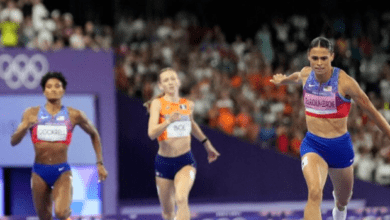Do Frequent Tennis Ball Changes Pose a Risk of Injuries? Players Weigh In”

In the lead-up to the Australian Open, Novak Djokovic, Tennis Ball the defending champion, experienced soreness in his right wrist, an inconvenience for a player reliant on that arm for racket swings. The 19th-seeded man, Cam Norrie, and 16-year-old Brenda Fruhvirtova, also grappled with wrist pain.
READ: New York Businesses Ordered to Require Masks Indoors or Vaccine Proof
Tennis Ball
While they refrained from directly attributing it to the varying tennis ball types used in the sport, there’s a growing concern among players about the impact of constantly adapting to projectiles with different weights, speeds, and textures.
Acknowledging this issue, the WTA and ATP professional tours have initiated a “strategic review” of tennis balls. However, any potential changes are not expected until 2025. Some players, like Milos Raonic and Taylor Fritz, express skepticism about the timeline, feeling that it’s a delayed response to a pressing matter.
Fritz, the highest-seeded American man in Melbourne, highlights concerns about the fluctuations among fuzzy tennis balls. He emphasizes the challenge of adjusting to different ball characteristics, stating that it can lead to injuries, especially when players transition from a lighter to a heavier ball.
The WTA reports that wrist and shoulder injuries, possibly linked to ball adjustments, account for a combined 18.5% of injuries on its tour over the past four years. With ten brands and 19 distinct types of tennis balls used across the WTA in 2023, the lack of consistency stands out compared to other sports like basketball, hockey, soccer, and baseball, which typically use a single brand.
The issue is exacerbated by the fact that surfaces change in tennis tournaments, prompting ball variations. Players like Carlos Alcaraz advocate for more consistency within each segment of the season, suggesting the adoption of a universal ball with varying branding from week to week as a potential compromise. However, the financial considerations and sponsorships currently play a significant role in determining the ball used at each tournament.




